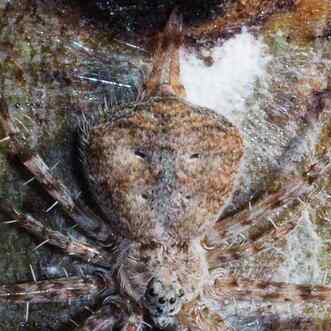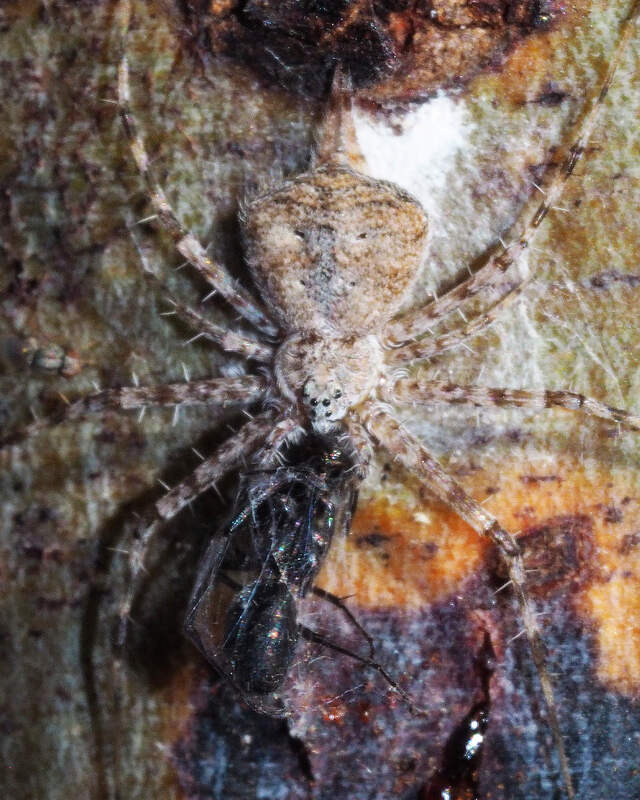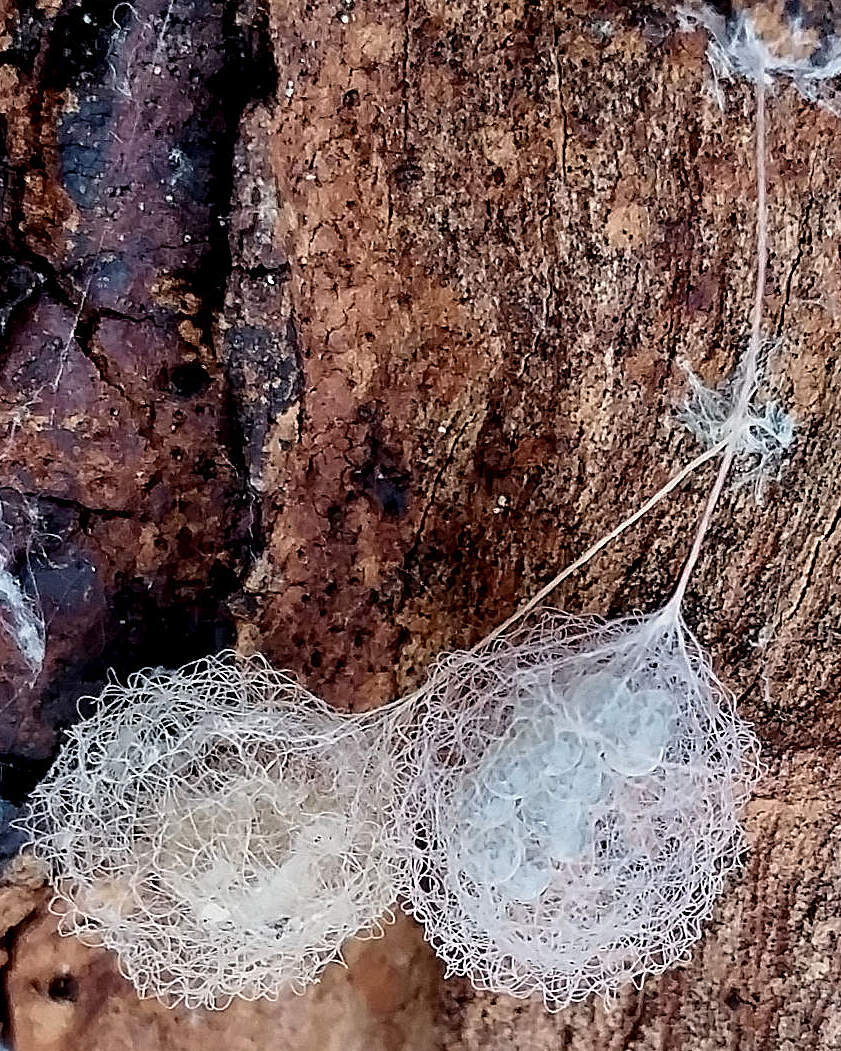 closeup showing eyes and twin spinnerets
closeup showing eyes and twin spinnerets While photographing blobs of gum exuding from a manna wattle trunk, I saw an amazingly well-camouflaged little spider within 15cm of my eye. I initially thought that it was a small false wolf spider, but the two long spinnerets indicate a two-tailed spider (Family Hersiliidae genus Tamopsis).
These little spiders are quite common on tree trunks in Eastern Australia, but I have never seen one before, and find few records of them in WA.
Two-tailed Spiders are day and night ambush hunters. The spider waits for the prey on a rock or tree trunk. When there is a small insect within range, the spider will face backwards to the insect, then moving side-way like a crab, runs around and around it, enmeshing the insect with thick silk released from its long spinnerets.
When the silk tightens, the spider turns around, bites an opening through the silk and starts feeding.
Two-tailed spiders are absolute masters of disguise that can change colour and pattern to match their surroundings. Their egg sacs are tiny silken balls of eggs like the ones below.
Check out amazing images by Farhan Bokhari (Myrmician)

